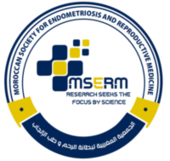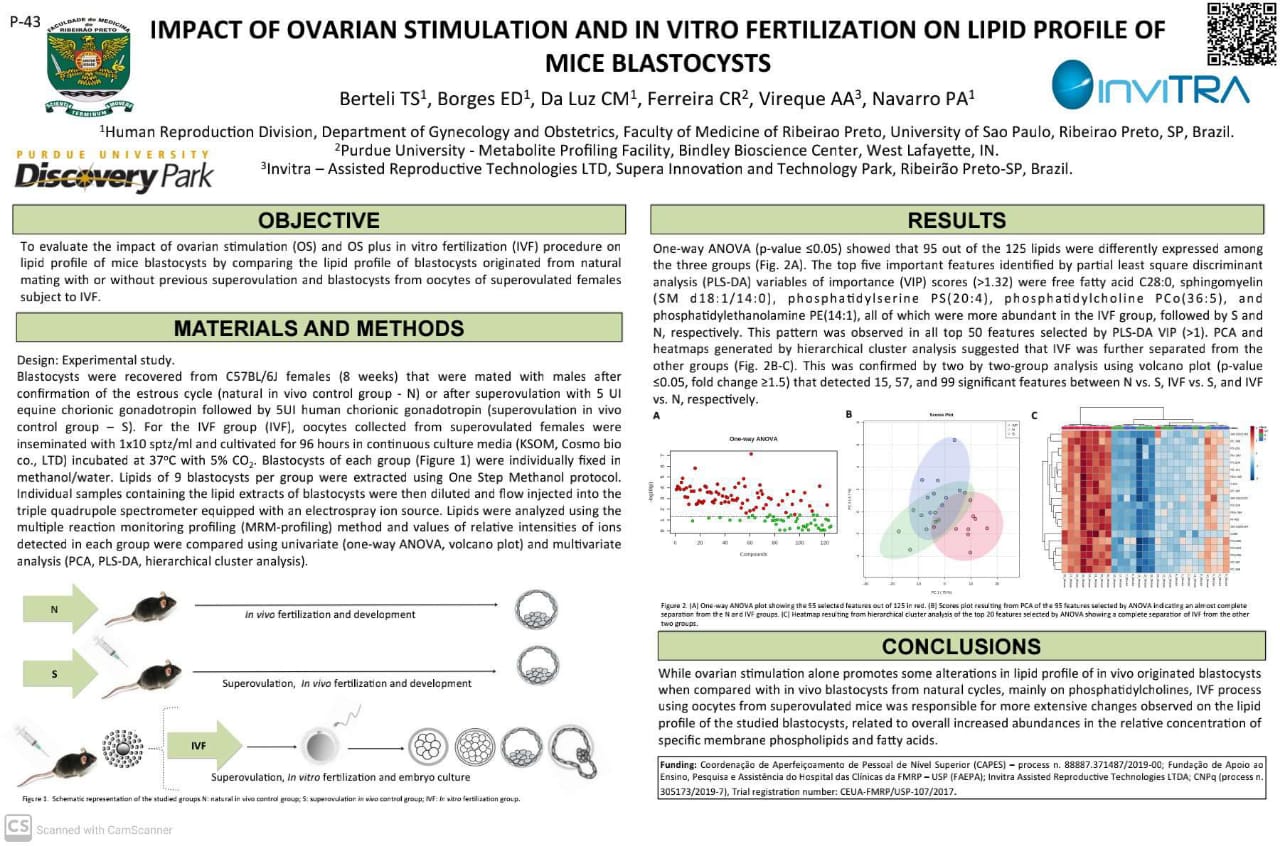Track: ART – LAB
Poster : ART Lab: Outcome Predictors
Thalita S. Berteli
PhD research fellow – New York University,
Langone Medical Center, NY, USA
University of São Paulo – FMRP – USP, SP, Brazil.
Objective: To evaluate the impact of ovarian stimulation (OS) and OS plus in vitro fertilization (IVF) procedure on lipid profile of mice blastocysts by comparing the lipid profile of blastocysts originated from natural mating with or without previous superovulation and blastocysts from oocytes of superovulated females subject to IVF. DESIGN: Experimental study. MATERIALS AND
Methods: Blastocysts were recovered from C57BL/6J females (8 weeks) that were mated with males after confirmation of the estrous cycle (natural in vivo control group – N) or after superovulation with 5 UI equine chorionic gonadotropin followed by 5UI human chorionic gonadotropin (superovulation in vivo control group – S). For the IVF group (IVF), oocytes collected from superovulated females were inseminated with 1×106 sptz/ml and cultivated for 96 hours in continuous culture media (KSOM, Cosmo bio co., LTD) incubated at 37oC with 5% CO2. Blastocysts of each group were individually fixed in methanol/water. Lipids of 9 blastocysts per group were extracted using One Step Methanol protocol. Individual samples containing the lipid extracts of blastocysts were then diluted and flow injected into the triple quadrupole spectrometer equipped with an electrospray ion source. Lipids were analyzed using the multiple reaction monitoring profiling (MRM-profiling) method and values of relative intensities of ions detected in each group were compared using univariate (one-way ANOVA, volcano plot) and multivariate analysis (PCA, PLS-DA, hierarchical cluster analysis).
Results: One-way ANOVA (p-value ≤0.05) showed that 95 out of the 125 lipids were differently expressed among the three groups. The top five important features identified by partial least square discriminant analysis (PLS-DA) variables of importance (VIP) scores (>1.32) were free fatty acid C28:0, sphingomyelin (SM d18:1/14:0), phosphatidylserine PS(20:4), phosphatidylcholine PCo(36:5), and phosphatidylethanolamine PE(14:1), all of which were more abundant in the IVF group, followed by S and N, respectively. This pattern was observed in all top 50 features selected by PLS-DA VIP (>1). PCA and heatmaps generated by hierarchical cluster analysis suggested that IVF was further separated from the other groups. This was confirmed by two by two-group analysis using volcano plot (p-value ≤0.05, fold change ≥1.5) that detected 15, 57, and 99 significant features between N vs. S, IVF vs. S, and IVF vs. N, respectively.
Conclusions: While ovarian stimulation alone promotes some alterations in lipid profile of in vivo originated blastocysts when compared with in vivo blastocysts from natural cycles, mainly on phosphatidylcholines, IVF process using oocytes from superovulated mice was responsible for more extensive changes observed on the lipid profile of the studied blastocysts, related to overall increased abundances in the relative concentration of specific membrane phospholipids and fatty acids.
ASMR official sponsorship in the publications of the virtual ASMR conference October 17-21 October 2020

